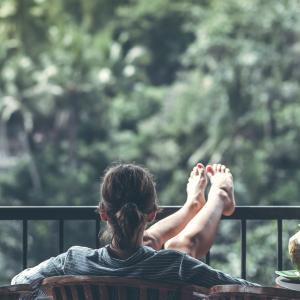Chemotherapy Drugs 101: The ABVD Regimen
Chemotherapy.
The word instills terror, invokes images of hair loss, weakness, sickness. It can be an extraordinarily trying time, for patients and their caregivers. The literally hundreds of different drugs used in chemotherapy treatment can be daunting. In order to try and remove some of the terror and mystery of chemo, I'm going to use this blog to take an occasional look at the various groups of drugs used in chemo—their names, what they are, and what they do—to cancer cells and to our bodies.
Chemotherapy is typically delivered in regimens, or groups of chemotherapy drugs, which we've come to know by their initials. Regimens are used because different chemo drugs attack cancer cells in different ways and at different stages of the cell cycle—look at it like an all-out assault on cancerous cell growth, or more colloquially, as not putting all your eggs in one basket.
In this entry I'll be looking at one of the most common chemotherapy regimens used to treat Hodgkin's Lymphoma, ABVD:
Adriamycin or doxorubicin (Adriamycin, Rubex)
Bleomycin (Blenoxane)
Vinblastine (Velban, Velbe, Velsar, vincaleukoblastine (VLB) vinblastine sulfate)
Dacarbazine (DTIC-Dome, dimethyl-triazeno, imidazole carboxamide)
Adriamycin (Doxorubicin) is an anthracycline antibiotic, meaning, in short, that it prevents cancerous DNA and RNA from replicating.
Bleomycin is known as a glycopeptide antibiotic. Like doxorubicin, it inhibits cancerous cell replication, in this case by binding to amino acids in the cell wall, not allowing for cell synthesis.
Vinblastine is a vinca alkaloid, which I wrote about earlier; a vinca alkaloid works to inhibit cell division during the M phase of the cell cycle.
Dacarbazine is an alkylating agent, which I also wrote about earlier; alkylating agents damage the DNA of cancer cells by 'alkylating' them, or adding a chemical group called an alkyl group to the cancer cell. The end result is a cancerous cell that can't replicate, or divide.
In the US, ABVD has all but replaced another regimen, MOPP. The patient receives the ABVD regimen through an IV; chemo is considered 'systemic therapy', thus the drugs circulate throughout the entire body, slaying cancer cells wherever they find them (and harming healthy cells too- the catch-22).
For all its effectiveness, ABVD unfortunately has a relapse rate of around 30-40%.
Furthermore, ABVD comes with a host of potential side effects, especially on account of the adriamycin (doxorubicin). However, it is currently the gold standard in the US for chemotherapy treatment of Hodgkin's Lymphoma.



